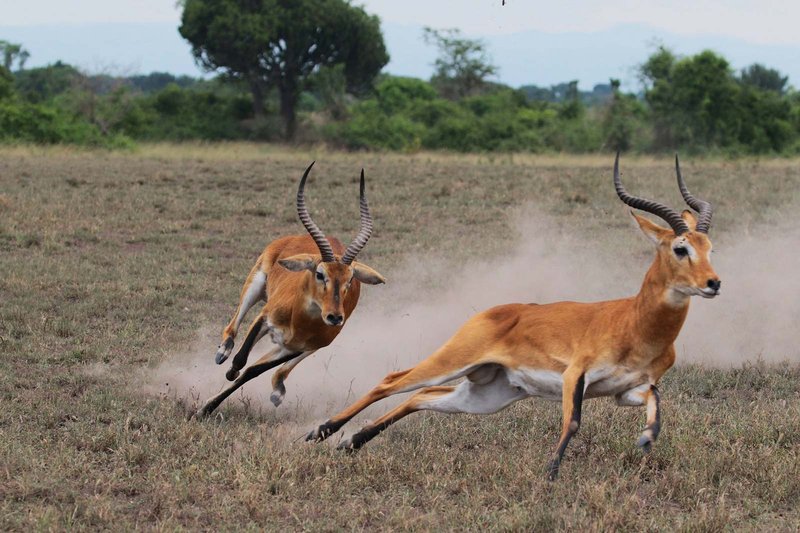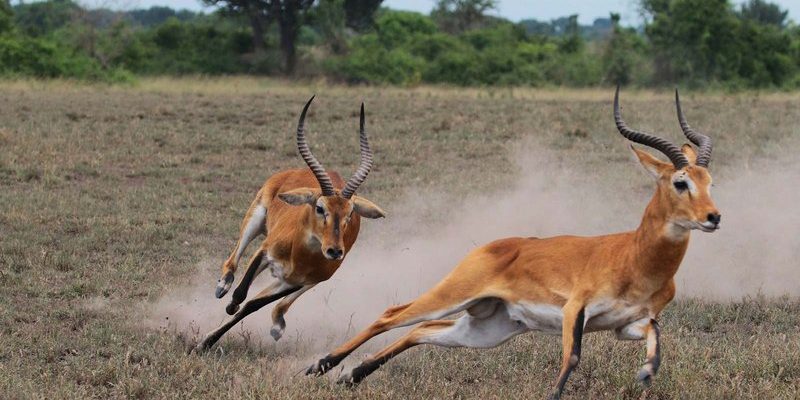
Ugandan kobs, much like a well-crafted Swiss army knife, are versatile and equipped with a set of skills that enable them to thrive where other species might struggle. Their adaptability, social structures, and physical attributes make them fascinating examples of survival in the wild. In this article, we’ll dive into the remarkable strategies and behaviors that help Ugandan kobs navigate their often harsh surroundings, exploring everything from their diet to social dynamics.
Understanding the Habitat of Ugandan Kobs
Ugandan kobs primarily inhabit savannas and wetlands, regions that can be both lush and unforgiving. The landscape offers a mix of open grasslands and dense thickets, providing the kobs with ample food and shelter. Here’s the thing: while these regions can be beautiful, they can also be incredibly challenging due to varying weather conditions and the presence of predators.
During the dry season, water sources become scarce, and the kobs face the risk of dehydration. To cope, they’ve developed a habit of migrating to areas with water and abundant grazing. This adaptability allows them to find not just food but also safety from potential threats lurking in the tall grasses. Imagine a tight-knit community relocating together, much like a family moving to a new home when the lease is up—only their survival depends on it.
Diet: A Flexible Feeder
When it comes to meals, Ugandan kobs are herbivores that primarily feed on grasses. Their diet varies based on what’s available, showcasing their flexibility and resourcefulness. They consume fresh green grass, which is plentiful during the rainy season, and even resort to rougher, drier grasses when times get tough.
One interesting fact is that kobs have specialized stomachs that can digest fibrous plant material effectively. This adaptation helps them extract the maximum nutrients from their food, even when quality options are limited. Imagine being the friend who can whip up a tasty meal from whatever ingredients are left in the pantry—that’s how Ugandan kobs operate in their environment, making the best out of what’s available.
Water Conservation Strategies
Water is crucial for survival, especially in the dry African savanna. Ugandan kobs have several clever adaptations to ensure they stay hydrated. They often drink from water sources early in the morning or late in the evening, minimizing exposure to the harsh midday sun. By understanding their environment, they can effectively navigate their surroundings to find water when it’s needed most.
Additionally, kobs are adept at conserving moisture. Their bodies retain water efficiently, allowing them to go longer periods without drinking. This is similar to how some plants in arid regions have adapted by storing water in their leaves or stems. It’s a brilliant example of how nature equips species to thrive in challenging conditions.
Social Structure and Group Dynamics
The social behavior of Ugandan kobs plays a significant role in their survival. These animals are usually found in groups known as herds, which can vary in size from a few individuals to several dozen. Being part of a herd offers numerous advantages, such as protection from predators. When a threat arises, the kobs work together, often fleeing in a coordinated manner that confuses their enemy.
In addition to safety, living in herds allows kobs to share knowledge about food and water sources. They communicate using a range of vocalizations and body language, much like how friends might pass along tips or warnings at a social gathering. This collective knowledge can be the difference between life and death during tough times.
Predator Awareness and Avoidance
Life in the wild is never without its challenges, and Ugandan kobs must constantly be aware of their surroundings to avoid becoming a meal for predators like lions and hyenas. They have excellent eyesight, enabling them to spot potential dangers from a distance. This vigilance is crucial; the earlier they can detect a threat, the better their chances of escaping.
When faced with danger, kobs rely on their speed and agility to evade predators. They can make swift, sharp turns and leap impressive distances, which can confuse a pursuing predator. Picture a game of tag where you need to be quick on your feet—that’s how Ugandan kobs navigate their environment when a chase ensues.
Role of Habitat Management and Conservation
As the habitat of Ugandan kobs faces threats from human activity and climate change, effective management and conservation efforts are vital to their survival. Protected areas like national parks offer a refuge where these creatures can live safely. Conservationists are working hard to maintain and restore habitats, ensuring that kobs have the space and resources needed to thrive.
Community involvement is also crucial in these efforts. Local populations can play a vital role in protecting these animals and their environment, fostering a sense of ownership and responsibility. When communities understand the importance of preserving wildlife, it leads to better outcomes for everyone involved.
In summary, Ugandan kobs are truly remarkable creatures that showcase nature’s adaptability and resilience. From their clever diet and water conservation strategies to their social structures and predator awareness, these antelopes have evolved to survive in some of the harshest conditions imaginable. Their story is a testament to the intricate connections between species and their environments.
As we continue to learn about these fascinating animals, it’s essential to remember our role in protecting their habitats. By supporting conservation efforts and raising awareness, we can help ensure that Ugandan kobs—and the ecosystems they represent—continue to thrive. After all, the more we understand about these beautiful creatures, the more we can appreciate the wild world around us.

